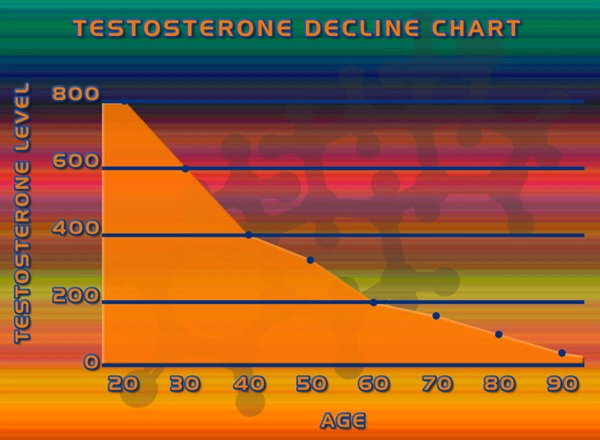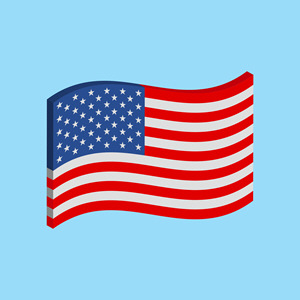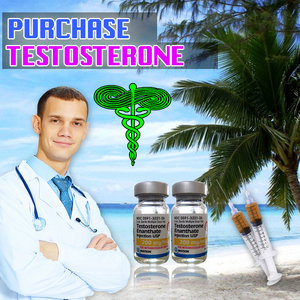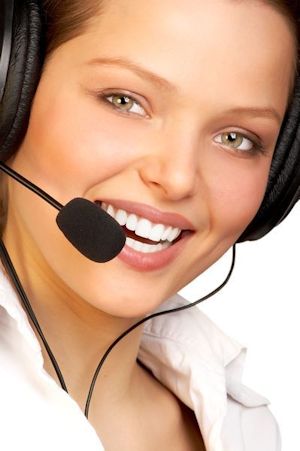When asked the question, “How old are you?” most folks would  wonder why anyone would ask such an obvious question. We all know our chronological age, which is the day, month, and year we were born.
wonder why anyone would ask such an obvious question. We all know our chronological age, which is the day, month, and year we were born.
But our chronological age does not tell the whole story.
Think about this. Two people can share the same chronological age to the exact day...but at a glance, they might look very different. One person may appear years older due to bad lifestyle choices (smoking, excess alcohol, drug abuse, poor food choices, lack of exercise), while another person born on the same day will look much younger due to a healthier lifestyle.
But how do we measure changes in the pace of aging? If better lifestyle changes are made, the challenge is to gauge where they were when they began the healthier changes and track the progress to see if these alterations are working.
To solve this problem, longevity researchers must first agree on the best measuring tools. With the power of ’omics, AI, and large biobanks, better biomarkers are on the horizon. Companies and scientists strive to develop accurate measurement tools, but what progress have they made?
scientists strive to develop accurate measurement tools, but what progress have they made?
The tenth Aging Research and Drug Discovery Meeting is currently underway in Copenhagen. The goal is to discuss and explore interventions designed to slow or even reverse aging.
However, a consensus is needed concerning the best biomarkers or tools to measure the aging process to get approval from the US Food and Drug Administration and other regulators to approve drugs, diets, or supplements.
“This is the question that I get most often: which aging biomarker to use? Because everyone would like to use the biomarkers to quantify aging,” said longevity researcher Vadim Gladyshev from Harvard Medical School during the launch in March of the Biomarkers of Aging Consortium, a new project set up by leading academics, clinical practitioners, and biotech companies to collaborate in testing and identifying reliable biomarkers.
Gladyshev, the director of redox medicine at Brigham and Women’s Hospital says it is still unclear which biomarker is most effective for evaluating pro-longevity interventions.
To find the answer, the consortium compiled a list of the most commonly used biomarkers, including those from ’omics — genomics, epigenomics, transcriptomics, proteomics, or metabolomics — and AI-derived blood-based clocks and other clinical markers.
The plan is that each proposed biomarker will be evaluated by a panel of longevity scientists, pass through regulatory bodies, and emerge with a set of guidelines for the community to use and refine.
A convoluted challenge of measuring aging in people was mentioned earlier; people age at different rates, even body tissues inside one person and cells within a given organ.
No two people will react similarly to the countless interventions tested worldwide — supplements, drugs, caloric restriction, plant-rich diets, intermittent fasting, metabolic interventions, young plasma, senolytics, or transient reprogramming.
“We need to develop a common and standardized way to measure the impact of these interventions in different people,” said consortium  member Vittorio Sebastiano, Stanford School of Medicine, during the launch event. A paper submitted to Cell reviewing the potential and challenges of blood-based composite biomarkers will be published immediately.
member Vittorio Sebastiano, Stanford School of Medicine, during the launch event. A paper submitted to Cell reviewing the potential and challenges of blood-based composite biomarkers will be published immediately.
“How do we measure biological aging in humans? We need this; it’s a prerequisite for trials,” says Sebastien Thuault, chief editor of Nature Aging.
In June, China began its own Aging Biomarker Consortium to answer basic questions about what promotes healthy aging, what causes health issues and accelerated aging, and how to measure changes in biological age for people following anti-aging regimens.
Not so easy
But arriving at a consensus will not be easy. So far, efforts to determine a single measurement for biological aging have not been successful.
“Should we be looking at gene expression, physiological function, regenerative capacity?” says Sebastiano. To add to the complexity, clocks can potentially measure events at the single cell, tissue, or whole organism level.
What’s needed is a comprehensive, holistic approach. With that in mind, Albert Lim, from the Gladyshev lab, released ClockBase, an  online visual tool that gathers all these data into a single platform for estimating biological age.
online visual tool that gathers all these data into a single platform for estimating biological age.
With artificial intelligence, Lim mined more than 2,000 DNA methylation datasets and nearly 200,000 mouse and human samples. The resulting age profiling tool allows the academic drug discovery community to access and test new interventions.
In 2013, the publication of pioneering work on biomarkers of aging by Steve Horvath at the University of California, Los Angeles, and separately by Gregory Hannum at the University of California, San Diego, represented a critical moment for the field.
Their hypothesis was that DNA methylation at specific cytosine-phosphoguanine (CpG) areas in the human genome can predict a person’s chronological age.
Hannum, a principal bioinformatics scientist at Exact Sciences, mathematically modeled changes in 71 CpG markers in DNA from white blood cells from a single cohort of 656 individuals. Horvath, a principal investigator at Altos Labs in Cambridge, UK, introduced the pan-tissue clock.
He used an Illumina DNA methylation microarray to spot CpG sites gained or lost in 8,000 human samples from healthy tissues and cell types at different ages. He selected 353 CpG sites with machine learning algorithms that could work as an age predictor and called it an epigenetic clock.
Second-generation clocks add into the mix blood biochemistry and lifestyle choices that may affect CpGs. One of these is PhenoAge, an epigenetic marker developed by Morgan Levine while at the David Geffen School of Medicine, University of California, Los Angeles.
The test incorporates nine blood markers regularly used in annual physicals, such as creatinine and C-reactive protein, to predict biological age: it can tell if a person is physiologically younger or older than their chronological age.
The result is one aging measure that requires a single blood draw. The marker is described in a bioRxiv paper still under review. “When it  comes to predicting general aging-related outcomes, we have a new group of methylation measures that seem to be better than most existing epigenetic clocks,” Levine says.
comes to predicting general aging-related outcomes, we have a new group of methylation measures that seem to be better than most existing epigenetic clocks,” Levine says.
The GrimAge clock, developed in Horvath’s lab, is also a composite maker: it merges DNA methylation with a detrimental environmental exposure — smoking. Horvath scanned the genome of thousands of people to uncover patterns of CpG changes due to tobacco smoking.
Using mathematical algorithms, he combined the results with a selection of plasma proteins associated with mortality or disease — for instance, plasminogen activator inhibitor. This yielded 1,030 CpG sites that could predict mortality risk, an improved DNA methylation clock that predicts “time to death.”
Because second-generation biomarkers consider lifestyles, they have led to a skyrocketing business in startups selling mail-order biological age tests directly to consumers.
Many other companies offer similar biological age estimates, but the FDA or other regulators have approved none.
The agency’s reluctance is not surprising since a precise measure of aging does not exist. These companies need the equivalent of a speedometer to quantify how fast a person is aging. A one-of-a-kind cohort could provide this critical information.
Longevity clinics are some of the methylation clocks’ fastest adopters. They want biomarkers that measure biological aging accurately but also prove responsive to interventions.
Geriatrician Andrea Maier, the founder of Chi Longevity, a clinic based in Singapore, says that to help their patients, biomarkers need to reflect within 4–6 months whether lifestyle, drug, or supplement interventions are working. “The DNAmAge is the most responsive,” says Maier.
The DNAmAge age calculator is a median of Hannum, Horvath, GrimAge, and PhenoAge clocks. “None of the clocks [on its own] is ‘best.’”
To refine the age prediction further, Maier includes Blood Age, a clock developed by Hong Kong-based Deep Longevity that makes AI-driven recommendations based on a panel of standard blood tests.
“That’s where machine learning helps to hone in the couple of hundred CpGs that are highly conserved [across mammalian species],” says  Horvath.
Horvath.
For those looking for an extended lifespan, a single formula to estimate age is a drug developer’s holy grail. But aging remains a perplexing, elusive, and scheming adversary.
Measuring it precisely will likely require the application of several different biomarkers. Until then, even the definition of aging for the purpose of interventions is up for debate.
Reference
https://www.nature.com/articles/d41587-023-00008-6
Contact Us Today For A Free Consultation
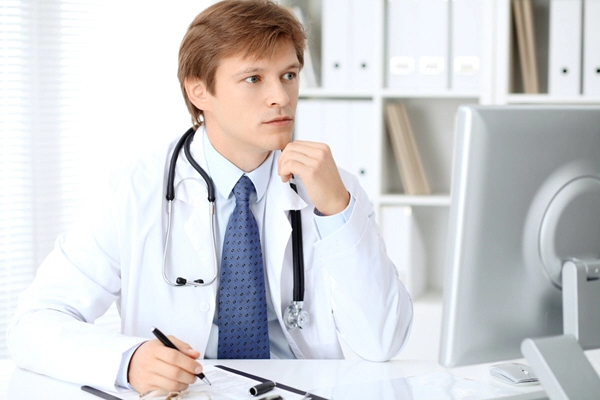
- Washington D.C. Testosterone Clinics for Low-T and Hormone Therapy [Last Updated On: October 1st, 2024] [Originally Added On: July 16th, 2018]
- Columbia Testosterone Clinics for Low-T and Comprehensive Hormone Therapy [Last Updated On: November 2nd, 2024] [Originally Added On: November 11th, 2018]
- Charleston Testosterone Clinics for Low-T and Comprehensive Hormone Therapy [Last Updated On: August 14th, 2024] [Originally Added On: November 11th, 2018]
- Providence Testosterone Clinics for Low-T and Comprehensive Hormone Therapy [Last Updated On: November 24th, 2024] [Originally Added On: November 11th, 2018]
- Pittsburgh Testosterone Clinics for Low-T and Comprehensive Hormone Therapy [Last Updated On: August 7th, 2024] [Originally Added On: November 11th, 2018]
- Philadelphia Testosterone Clinics for Low-T and Comprehensive Hormone Therapy [Last Updated On: November 15th, 2024] [Originally Added On: November 11th, 2018]
- Erie Testosterone Clinics for Low-T and Comprehensive Hormone Therapy [Last Updated On: June 22nd, 2024] [Originally Added On: November 11th, 2018]
- Allentown Testosterone Clinics for Low-T and Comprehensive Hormone Therapy [Last Updated On: July 10th, 2024] [Originally Added On: November 11th, 2018]
- Salem Testosterone Clinics for Low-T and Comprehensive Hormone Therapy [Last Updated On: March 6th, 2024] [Originally Added On: November 11th, 2018]
- Portland Testosterone Clinics for Low-T and Comprehensive Hormone Therapy [Last Updated On: January 11th, 2024] [Originally Added On: November 11th, 2018]
- Gresham Testosterone Clinics for Low-T and Comprehensive Hormone Therapy [Last Updated On: November 13th, 2024] [Originally Added On: November 11th, 2018]
- Eugene Testosterone Clinics for Low-T and Comprehensive Hormone Therapy [Last Updated On: June 19th, 2024] [Originally Added On: November 11th, 2018]
- Tulsa Testosterone Clinics for Low-T and Comprehensive Hormone Therapy [Last Updated On: March 13th, 2024] [Originally Added On: November 11th, 2018]
- Oklahoma City Testosterone Clinics for Low-T and Comprehensive Hormone Therapy [Last Updated On: April 18th, 2024] [Originally Added On: November 11th, 2018]
- Norman Testosterone Clinics for Low-T and Comprehensive Hormone Therapy [Last Updated On: November 20th, 2024] [Originally Added On: November 11th, 2018]
- Toledo Testosterone Clinics for Low-T and Comprehensive Hormone Therapy [Last Updated On: August 21st, 2024] [Originally Added On: November 11th, 2018]
- Dayton Testosterone Clinics for Low-T and Comprehensive Hormone Therapy [Last Updated On: April 4th, 2024] [Originally Added On: November 11th, 2018]
- Columbus Testosterone Clinics for Low-T and Comprehensive Hormone Therapy [Last Updated On: July 24th, 2024] [Originally Added On: November 11th, 2018]
- Cleveland Testosterone Clinics for Low-T and Comprehensive Hormone Therapy [Last Updated On: May 12th, 2024] [Originally Added On: November 11th, 2018]
- Cincinnati Testosterone Clinics for Low-T and Comprehensive Hormone Therapy [Last Updated On: February 5th, 2024] [Originally Added On: November 11th, 2018]
- Akron Testosterone Clinics for Low-T and Comprehensive Hormone Therapy [Last Updated On: November 1st, 2024] [Originally Added On: November 11th, 2018]
- Bismarck Testosterone Clinics for Low-T and Comprehensive Hormone Therapy [Last Updated On: June 17th, 2024] [Originally Added On: November 11th, 2018]
- Winston-Salem Testosterone Clinics for Low-T and Comprehensive Hormone Therapy [Last Updated On: February 15th, 2024] [Originally Added On: November 11th, 2018]
- Wilmington Testosterone Clinics for Low-T and Comprehensive Hormone Therapy [Last Updated On: February 29th, 2024] [Originally Added On: November 11th, 2018]
- Raleigh Testosterone Clinics for Low-T and Comprehensive Hormone Therapy [Last Updated On: May 29th, 2024] [Originally Added On: November 11th, 2018]
- High Point Testosterone Clinics for Low-T and Comprehensive Hormone Therapy [Last Updated On: May 10th, 2024] [Originally Added On: November 11th, 2018]
- Greensboro Testosterone Clinics for Low-T and Comprehensive Hormone Therapy [Last Updated On: July 30th, 2024] [Originally Added On: November 11th, 2018]
- Fayetteville Testosterone Clinics for Low-T and Comprehensive Hormone Therapy [Last Updated On: March 19th, 2024] [Originally Added On: November 11th, 2018]
- Durham Testosterone Clinics for Low-T and Comprehensive Hormone Therapy [Last Updated On: October 24th, 2024] [Originally Added On: November 11th, 2018]
- Charlotte Testosterone Clinics for Low-T and Comprehensive Hormone Therapy [Last Updated On: May 7th, 2024] [Originally Added On: November 11th, 2018]
- Cary Testosterone Clinics for Low-T and Comprehensive Hormone Therapy [Last Updated On: April 16th, 2024] [Originally Added On: November 11th, 2018]
- Yonkers Testosterone Clinics for Low-T and Comprehensive Hormone Therapy [Last Updated On: April 7th, 2024] [Originally Added On: November 11th, 2018]
- Syracuse Testosterone Clinics for Low-T and Comprehensive Hormone Therapy [Last Updated On: January 10th, 2024] [Originally Added On: November 11th, 2018]
- Rochester Testosterone Clinics for Low-T and Comprehensive Hormone Therapy [Last Updated On: May 16th, 2024] [Originally Added On: November 11th, 2018]
- Buffalo Testosterone Clinics for Low-T and Comprehensive Hormone Therapy [Last Updated On: March 5th, 2024] [Originally Added On: November 11th, 2018]
- Albuquerque Testosterone Clinics for Low-T and Comprehensive Hormone Therapy [Last Updated On: September 28th, 2024] [Originally Added On: November 11th, 2018]
- Paterson Testosterone Clinics for Low-T and Comprehensive Hormone Therapy [Last Updated On: September 14th, 2024] [Originally Added On: November 11th, 2018]
- Newark Testosterone Clinics for Low-T and Comprehensive Hormone Therapy [Last Updated On: February 9th, 2024] [Originally Added On: November 11th, 2018]
- Jersey City Testosterone Clinics for Low-T and Comprehensive Hormone Therapy [Last Updated On: September 19th, 2024] [Originally Added On: November 11th, 2018]
- Elizabeth Testosterone Clinics for Low-T and Comprehensive Hormone Therapy [Last Updated On: May 15th, 2024] [Originally Added On: November 11th, 2018]
- Manchester Testosterone Clinics for Low-T and Comprehensive Hormone Therapy [Last Updated On: May 27th, 2024] [Originally Added On: November 11th, 2018]
- Reno Testosterone Clinics for Low-T and Comprehensive Hormone Therapy [Last Updated On: April 26th, 2024] [Originally Added On: November 11th, 2018]
- North Las Vegas Testosterone Clinics for Low-T and Comprehensive Hormone Therapy [Last Updated On: May 2nd, 2024] [Originally Added On: November 11th, 2018]
- Las Vegas Testosterone Clinics for Low-T and Comprehensive Hormone Therapy [Last Updated On: February 7th, 2024] [Originally Added On: November 11th, 2018]
- Henderson Testosterone Clinics for Low-T and Comprehensive Hormone Therapy [Last Updated On: August 17th, 2024] [Originally Added On: November 11th, 2018]
- Omaha Testosterone Clinics for Low-T and Comprehensive Hormone Therapy [Last Updated On: November 17th, 2024] [Originally Added On: November 11th, 2018]
- Lincoln Testosterone Clinics for Low-T and Comprehensive Hormone Therapy [Last Updated On: October 30th, 2024] [Originally Added On: November 11th, 2018]
- Billings Testosterone Clinics for Low-T and Comprehensive Hormone Therapy [Last Updated On: June 8th, 2024] [Originally Added On: November 11th, 2018]
- St Louis Testosterone Clinics for Low-T and Comprehensive Hormone Therapy [Last Updated On: July 1st, 2024] [Originally Added On: November 11th, 2018]
- Springfield Testosterone Clinics for Low-T and Comprehensive Hormone Therapy [Last Updated On: May 1st, 2024] [Originally Added On: November 11th, 2018]
- Kansas City Testosterone Clinics for Low-T and Comprehensive Hormone Therapy [Last Updated On: February 4th, 2024] [Originally Added On: November 11th, 2018]
- Independence Testosterone Clinics for Low-T and Comprehensive Hormone Therapy [Last Updated On: November 12th, 2024] [Originally Added On: November 11th, 2018]
- Columbia Testosterone Clinics for Low-T and Comprehensive Hormone Therapy [Last Updated On: November 14th, 2024] [Originally Added On: November 11th, 2018]
- Jackson Testosterone Clinics for Low-T and Comprehensive Hormone Therapy [Last Updated On: September 20th, 2024] [Originally Added On: November 11th, 2018]
- St Paul Testosterone Clinics for Low-T and Comprehensive Hormone Therapy [Last Updated On: October 12th, 2024] [Originally Added On: November 11th, 2018]
- Rochester Testosterone Clinics for Low-T and Comprehensive Hormone Therapy [Last Updated On: September 3rd, 2024] [Originally Added On: November 11th, 2018]
- Minneapolis Testosterone Clinics for Low-T and Comprehensive Hormone Therapy [Last Updated On: November 6th, 2024] [Originally Added On: November 11th, 2018]
- Warren Testosterone Clinics for Low-T and Comprehensive Hormone Therapy [Last Updated On: August 10th, 2024] [Originally Added On: November 11th, 2018]
- Sterling Heights Testosterone Clinics for Low-T and Comprehensive Hormone Therapy [Last Updated On: October 13th, 2024] [Originally Added On: November 11th, 2018]
- Lansing Testosterone Clinics for Low-T and Comprehensive Hormone Therapy [Last Updated On: April 25th, 2024] [Originally Added On: November 11th, 2018]
- Grand Rapids Testosterone Clinics for Low-T and Comprehensive Hormone Therapy [Last Updated On: April 19th, 2024] [Originally Added On: November 11th, 2018]
- Flint Testosterone Clinics for Low-T and Comprehensive Hormone Therapy [Last Updated On: May 20th, 2024] [Originally Added On: November 11th, 2018]
- Detroit Testosterone Clinics for Low-T and Comprehensive Hormone Therapy [Last Updated On: March 23rd, 2024] [Originally Added On: November 11th, 2018]
- Ann Arbor Testosterone Clinics for Low-T and Comprehensive Hormone Therapy [Last Updated On: October 3rd, 2024] [Originally Added On: November 11th, 2018]
- Worcester Testosterone Clinics for Low-T and Comprehensive Hormone Therapy [Last Updated On: October 28th, 2024] [Originally Added On: November 11th, 2018]
- Springfield Testosterone Clinics for Low-T and Comprehensive Hormone Therapy [Last Updated On: October 15th, 2024] [Originally Added On: November 11th, 2018]
- Lowell Testosterone Clinics for Low-T and Comprehensive Hormone Therapy [Last Updated On: January 25th, 2024] [Originally Added On: November 11th, 2018]
- Cambridge Testosterone Clinics for Low-T and Comprehensive Hormone Therapy [Last Updated On: February 6th, 2024] [Originally Added On: November 11th, 2018]
- Boston Testosterone Clinics for Low-T and Comprehensive Hormone Therapy [Last Updated On: August 16th, 2024] [Originally Added On: November 11th, 2018]
- Baltimore Testosterone Clinics for Low-T and Comprehensive Hormone Therapy [Last Updated On: March 7th, 2024] [Originally Added On: November 11th, 2018]
- Augusta Testosterone Clinics for Low-T and Comprehensive Hormone Therapy [Last Updated On: May 21st, 2024] [Originally Added On: November 11th, 2018]
- Shreveport Testosterone Clinics for Low-T and Comprehensive Hormone Therapy [Last Updated On: February 2nd, 2024] [Originally Added On: November 11th, 2018]
- New Orleans Testosterone Clinics for Low-T and Comprehensive Hormone Therapy [Last Updated On: March 16th, 2024] [Originally Added On: November 11th, 2018]
- Lafayette Testosterone Clinics for Low-T and Comprehensive Hormone Therapy [Last Updated On: September 24th, 2024] [Originally Added On: November 11th, 2018]
- Baton Rouge Testosterone Clinics for Low-T and Comprehensive Hormone Therapy [Last Updated On: October 2nd, 2024] [Originally Added On: November 11th, 2018]
- Louisville Testosterone Clinics for Low-T and Comprehensive Hormone Therapy [Last Updated On: February 23rd, 2024] [Originally Added On: November 11th, 2018]
- Lexington Testosterone Clinics for Low-T and Comprehensive Hormone Therapy [Last Updated On: October 11th, 2024] [Originally Added On: November 11th, 2018]
- Wichita Testosterone Clinics for Low-T and Comprehensive Hormone Therapy [Last Updated On: March 26th, 2024] [Originally Added On: November 11th, 2018]
- Topeka Testosterone Clinics for Low-T and Comprehensive Hormone Therapy [Last Updated On: February 28th, 2024] [Originally Added On: November 11th, 2018]
- Overland Park Testosterone Clinics for Low-T and Comprehensive Hormone Therapy [Last Updated On: February 20th, 2024] [Originally Added On: November 11th, 2018]
Word Count: 1364


